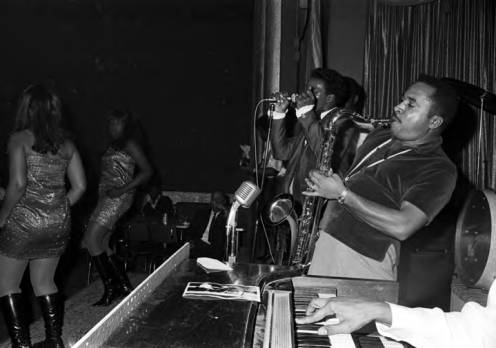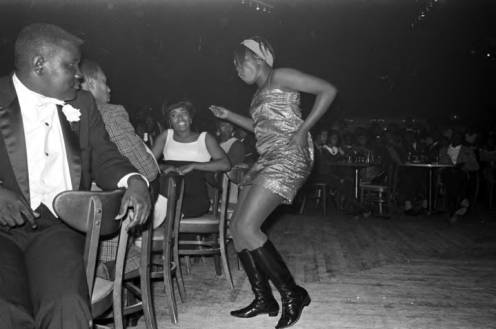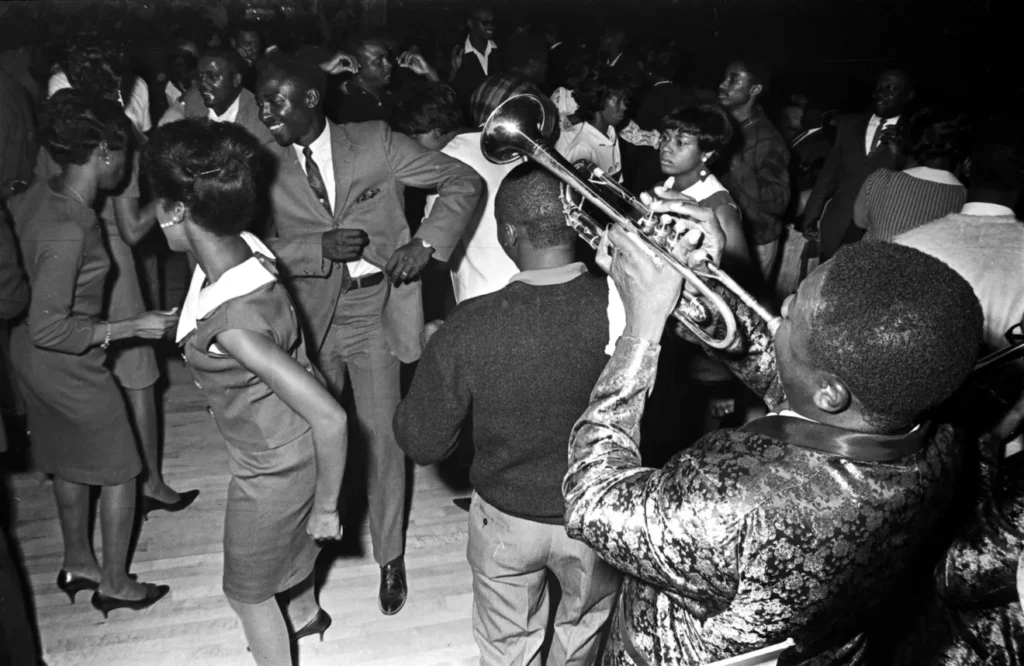Photos by Jim Peppler
In the 1960s, during a period marked by the plight for civil rights, there existed a venue that became a sanctuary of solace and expression for the African American community. It symbolized not just a venue for artistic expression but a haven for families and the wider community amidst the social upheavals of the era.
The essence of this significance is immortalized in photographs capturing hundreds of people dancing and celebrating life during one of America’s most challenging times. Legendary musicians like B.B. King and Bobby Moore & The Rhythm Aces brought warmth to the nights at Montgomery’s Laicos Club, a name cleverly derived from spelling “social” backwards. This club was a beacon for Blacks who, by day, faced the harsh realities of Jim Crow laws. For the artists, it represented a pinnacle of achievement within the music scene.
During these times, the Southern Courier, a rare white media outlet that sought to bridge the gap in coverage of African American issues, played a pivotal role. Its reporting spanned from tragic incidents of racial violence to stories of desegregation and the fight against systemic injustice. Photographer Jim Peppler, associated with the Courier, found himself drawn to Laicos, capturing moments of joy and cultural vibrancy that other media outlets overlooked. Despite being advised to exercise caution in his photography, especially around certain patrons, Peppler’s lens captured the essence of Laicos and its patrons, offering a window into a world where music and community provided a temporary respite from the struggles outside.
Laicos Club was part of a broader network of Black clubs in the South that not only launched music legends but also offered a sense of freedom and relief to the African American community. These clubs, each with their unique ambiance, ranged from the elite Citizens Club to the Club Delisa, known for its revolving dance floor. However, as time passed, many of these establishments, including Laicos, closed their doors, leaving behind memories and stories captured in Peppler’s photographs.
These images, now preserved by the Alabama Department of Archives and History, serve as a visual narrative of a community’s resilience and quest for joy amidst the turbulence of segregation and civil rights struggles. They highlight not only the musical icons who performed there but also the everyday people who sought a moment of escape within their walls. Through these photographs, the legacy of Laicos and similar venues lives on, reminding us of the power of community and music in facing societal challenges.















Photos by Jim Peppler
